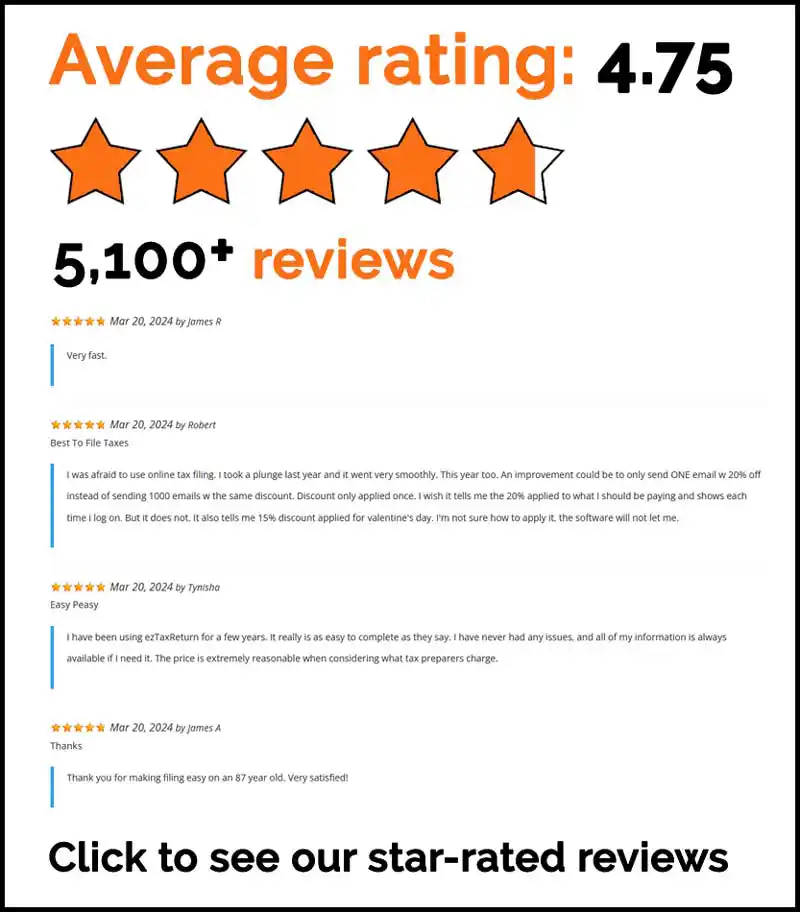The information in this article is up to date for tax year 2025 (returns filed in 2026).
Looking for what is the current mileage reimbursement rate for 2025? For business use, it’s 70 cents per mile. For medical or moving purposes, it’s 21 cents per mile, and for charitable activities, it’s 14 cents per mile. Read on to learn more about how these rates are determined and what factors have influenced the changes.
Key Takeaways
- The IRS has set the 2025 mileage reimbursement rates at 70 cents per mile for business, 21 cents for medical or moving trips, and 14 cents for charitable driving.
- Factors like fluctuating fuel prices and vehicle operating costs directly influence the annual adjustments of these mileage rates to ensure fair compensation.
- Accurate record-keeping is essential for taxpayers to substantiate their mileage deductions, whether using the standard mileage rate or tracking actual expenses.
2025 Mileage Reimbursement Rates
The IRS has announced new mileage reimbursement rates for 2025, effective from January 1. These rates set a benchmark for reporting and reimbursement, helping taxpayers comply accurately with internal revenue service tax regulations. The mileage rates have been adjusted to reflect changes in fuel costs and vehicle operating expenses, serving as a vital tool for individuals and businesses.
The standard mileage rates for 2025 are: 70 cents per mile for business use of a privately owned vehicle, 21 cents per mile for medical or moving purposes, and 14 cents per mile for charitable organizations.
These rates help ensure accurate reporting and compliance with tax laws.
Business Mileage Rate
The IRS standard mileage rate for business use of a privately owned vehicle in 2025 is 70 cents per mile, a slight increase from the previous year due to higher operational costs and fuel prices. This rate covers variable vehicle costs like fuel, maintenance, and insurance.
Medical and Moving Purposes
The IRS mileage reimbursement rate for medical or moving purposes in 2025 is 21 cents per mile, designed to assist with travel costs for medical treatments or relocation. Though lower than the business rate, it provides substantial relief for out-of-pocket expenses.
Qualified active duty members of the armed forces can benefit from this rate, especially during a permanent change of station. This rate helps alleviate financial burdens associated with moving expenses and medical travel, ensuring these trips are not a significant financial strain.
Charitable Organizations
The mileage rate for charitable organizations remains at 14 cents per mile for 2025. Volunteers who drive in service of charitable organizations can deduct these travel costs on their tax returns.
Although the rate remains unchanged, this rate continues to benefit those who generously offer their time and resources to charitable causes.
Factors Influencing the 2025 Rates
Several factors influence the IRS mileage reimbursement rates annually, with 2025 being no exception. Fuel price fluctuations are a primary driver behind these adjustments. From 2014 to 2025, IRS mileage rates have generally increased due to rising fuel costs and inflation, ensuring reimbursement rates remain fair and reflective of actual taxpayer costs.
Gas Prices
Gas prices are a major factor influencing the IRS mileage rates for 2025. As fuel prices fluctuate, so do vehicle operating costs. The IRS considers these changes to ensure the reimbursement rate aligns with current fuel costs.
Economic instability, where gas prices spike or drop dramatically, can lead to significant mileage rate adjustments. This ensures taxpayers are neither over-compensated nor under-compensated for their mileage expenses, maintaining fairness.
Vehicle Operating Costs
Vehicle operating costs include both fixed and variable expenses, contributing to the mileage reimbursement rate. Fixed costs, such as insurance and registration fees, remain constant regardless of vehicle usage and are a critical component of total ownership costs.
Variable costs fluctuate based on usage and include fuel, maintenance, and tire costs, varying significantly with mileage. The IRS analyzes these fixed and variable costs and deductible costs to determine accurate and equitable mileage reimbursement rates.
Calculating Your Mileage Deduction
To calculate your mileage deduction, multiply the number of business miles driven by the 2025 business mileage rate of 70 cents per mile. This rate includes a portion for vehicle depreciation, accounting for wear and tear.
Accurate mileage documentation is crucial for IRS compliance and can lead to significant tax savings. Keeping detailed records of trips, including dates, destinations, and business purposes, substantiates mileage deductions and prevents potential IRS issues. Ready to cruise through tax season? Start now.
Standard Mileage vs. Actual Expenses
There are two primary options for claiming mileage deductions: using the standard mileage rate or calculating actual expenses. The standard mileage rate simplifies record-keeping by only requiring tracking of miles driven and trip purposes, making it a preferred, straightforward option. Calculating actual expenses involves meticulously tracking all vehicle-related costs, including fuel, maintenance, insurance, and depreciation, to determine the total deductible costs for business use.
Taxpayers can switch between the standard mileage and actual expenses methods in different tax years. However, you must use the standard mileage rate the first year a vehicle is used for business. This flexibility allows taxpayers to choose the method providing the greatest tax benefit.
Note: ezTaxReturn only supports the ‘standard mileage rate’ method of determining vehicle expenses.
Importance of Accurate Records
The IRS requires detailed mileage records to support deductions, including odometer readings, trip dates, and purposes. Maintaining a log of these details validates mileage deductions and ensures IRS compliance.
Depreciation in Business Mileage Rate
Depreciation is a significant component of the business mileage rate. In 2025, 33 cents of the 70 cents per mile business mileage rate is allocated for vehicle depreciation, reflecting the decline in the vehicle’s value due to business use.
Breakdown of Depreciation
Vehicle depreciation is a key factor in the IRS business mileage reimbursement rate. In 2025, 33 cents of the 70 cents per mile rate is allocated for vehicle depreciation, compensating for reduced vehicle value due to business use.
Including depreciation in the mileage rate reflects the true costs of operating a vehicle for business use. This ensures taxpayers are fairly reimbursed for vehicle value decline, providing a comprehensive and accurate rate.
Tracking Actual Costs
Maintaining comprehensive records is essential for those tracking actual vehicle expenses. Documenting all operational costs, including fuel, maintenance, tires, and depreciation, allows accurate deduction calculations and IRS compliance.
Vehicle operating costs include fixed and variable expenses. Fixed costs like insurance and registration fees remain constant, while variable costs like fuel and maintenance fluctuate with mileage. Accurate tracking is crucial for reporting actual costs.
Best Practices for Mileage Tracking
Choosing the right mileage tracking method can boost both efficiency and accuracy. The simplest option is using a mileage tracking app, which automates the process, reduces errors, and improves accountability. For those who prefer a more hands-on approach, manual record-keeping can work well too.
Mileage Tracking Apps
Mileage tracking apps take the hassle out of tracking by automatically calculating distances and organizing trips, so you can avoid mistakes and stay on top of your records. Timeero, for example, is recognized for its user-friendly design and automatic tracking capabilities.
Other apps, like TripLog, offer multiple tracking modes, including manual and automatic options, catering to different preferences. These features help users maintain accurate records and prepare for tax deductions.
Manual Record-Keeping Tips
Manual record-keeping can be practical and effective for tracking mileage. Using a dedicated spreadsheet to record dates, distances, and purposes of trips allows for customization and ensures all necessary information is captured.
By creating a detailed template with columns for trip dates, purposes, and distances, you can streamline the process and maintain accurate records. Keeping your spreadsheet updated regularly is key to ensuring your mileage deductions are accurate and meet IRS requirements.
Summary
To sum up, the IRS mileage reimbursement rates for 2025 reflect changes due to rising fuel prices and vehicle operating costs. Knowing these rates and how they’re calculated can help taxpayers make the most of their mileage deductions and stay compliant with tax laws. The standard business mileage rate is 70 cents per mile, while rates for medical, moving, and charitable purposes are 21 cents and 14 cents per mile, respectively.
Accurate mileage tracking is key to supporting deductions and avoiding IRS issues. Using mileage tracking apps or keeping detailed manual records can make the process easier and ensure you have solid documentation. By following best practices for tracking mileage and understanding how the rates are set, taxpayers can maximize their deductions and achieve valuable tax savings.
Frequently Asked Questions
What is the IRS mileage reimbursement rate for business use in 2025?
The IRS mileage reimbursement rate for business use in 2025 is 70 cents per mile driven. Make sure to keep track of your mileage to get the most out of your reimbursements!
How can I calculate my mileage deduction for 2025?
To calculate your mileage deduction for 2025, simply multiply the number of business miles you’ve driven by the standard mileage rate of 70 cents per mile. It’s that straightforward!
What factors influence the IRS mileage rates?
The IRS mileage rates are mainly influenced by fuel prices, vehicle operating costs, and overall economic conditions like inflation. So, these factors can really impact how much you can deduct for mileage.
Are there apps available to help with mileage tracking?
Absolutely, you can find plenty of mileage tracking apps like MileIQ, Everlance, Timeero and TripLog that make it easy to calculate distances and keep your records accurate. It’s a smart way to simplify your mileage tracking!
What is the mileage reimbursement rate for charitable organizations in 2025?
The mileage reimbursement rate for charitable organizations in 2025 is still 14 cents per mile. So if you’re driving for a good cause, keep that rate in mind!
Ready to hit the road to your biggest refund? Let ezTaxReturn steer you through filing your taxes with ease. Start your journey today!
The articles and content published on this blog are provided for informational purposes only. The information presented is not intended to be, and should not be taken as, legal, financial, or professional advice. Readers are advised to seek appropriate professional guidance and conduct their own due diligence before making any decisions based on the information provided.




